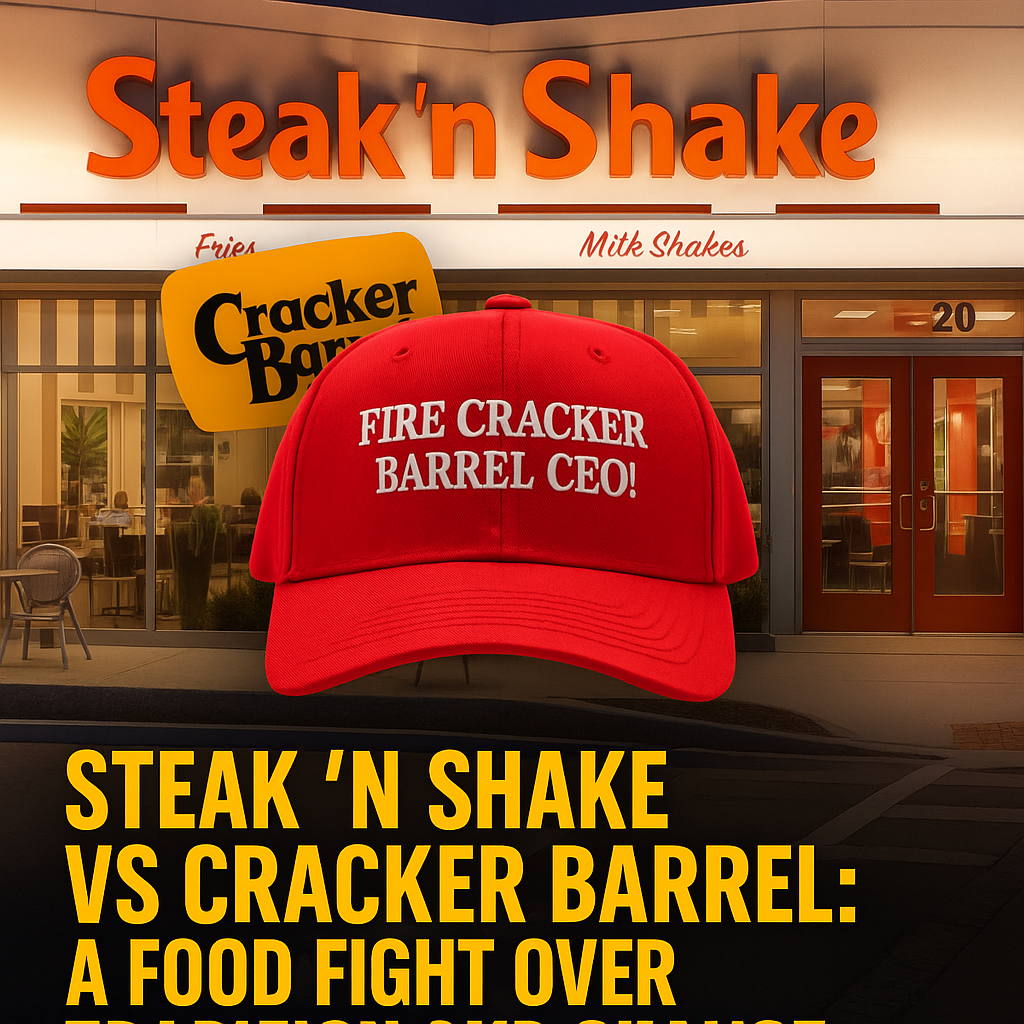Introduction
In the American restaurant industry, branding decisions often spark debates, but the recent clash between Steak ’n Shake and Cracker Barrel has gone beyond a typical marketing story. When Cracker Barrel unveiled its new logo and modernized interior design, the company expected to refresh its image and attract younger diners. Instead, the move created an unexpected firestorm. Customers, investors, and even rival chains reacted with anger. The loudest voice came from Steak ’n Shake, which mocked Cracker Barrel’s leadership with bold MAGA-style hats calling for the CEO to be fired.
Cracker Barrel’s Risky Rebrand
For decades, Cracker Barrel has been known for its rustic design, rocking chairs, antique décor, and its iconic man resting against a barrel in the company logo. Earlier this year, executives decided to simplify the branding. The classic figure disappeared, replaced by a minimalist design featuring a plain yellow barrel and modern typography. Alongside the new logo, stores began updating interiors with cleaner lines and fewer old-fashioned elements.
The intention was clear: appeal to younger generations while keeping loyal customers. However, the backlash was swift. Many longtime diners felt betrayed. Social media erupted with comments accusing Cracker Barrel of abandoning its Southern roots. Critics called the move “woke,” while some fans threatened to stop visiting altogether.
Steak ’n Shake Strikes Back
Among the critics, Steak ’n Shake stood out for its unusually aggressive response. The company, led by CEO Sardar Biglari—who also happens to be a major Cracker Barrel investor—saw an opportunity to highlight its own commitment to tradition. On social media, Steak ’n Shake released images of bright red MAGA-style caps reading: “FIRE CRACKER BARREL CEO!”
The move was both humorous and political, blending pop culture with corporate rivalry. By adopting the familiar style of a “Make America Great Again” cap, Steak ’n Shake directly tied Cracker Barrel’s misstep to a larger cultural debate about tradition versus change in America.
Financial and Cultural Fallout
The controversy quickly extended beyond memes. Cracker Barrel’s stock price dropped sharply after the rebrand, wiping out tens of millions in market value. Analysts warned that alienating loyal customers could be costly, especially in a competitive casual dining sector. Meanwhile, Steak ’n Shake positioned itself as the defender of heritage, proudly stating: “Heritage is what got Cracker Barrel this far.”
This situation reveals how branding decisions are no longer just about design. In today’s polarized environment, even a new logo can become a flashpoint for cultural identity and political expression.
Conclusion
The fight between Steak ’n Shake and Cracker Barrel highlights the tension every brand faces: adapt to a changing market or preserve tradition. Cracker Barrel attempted to modernize, but underestimated the emotional connection customers had with its old imagery. Steak ’n Shake seized the moment, using satire and bold messaging to position itself as the champion of heritage.
In the end, this “food fight” is more than a marketing spat. It is a reminder that in American dining culture, tradition sells—and change comes with risks.


